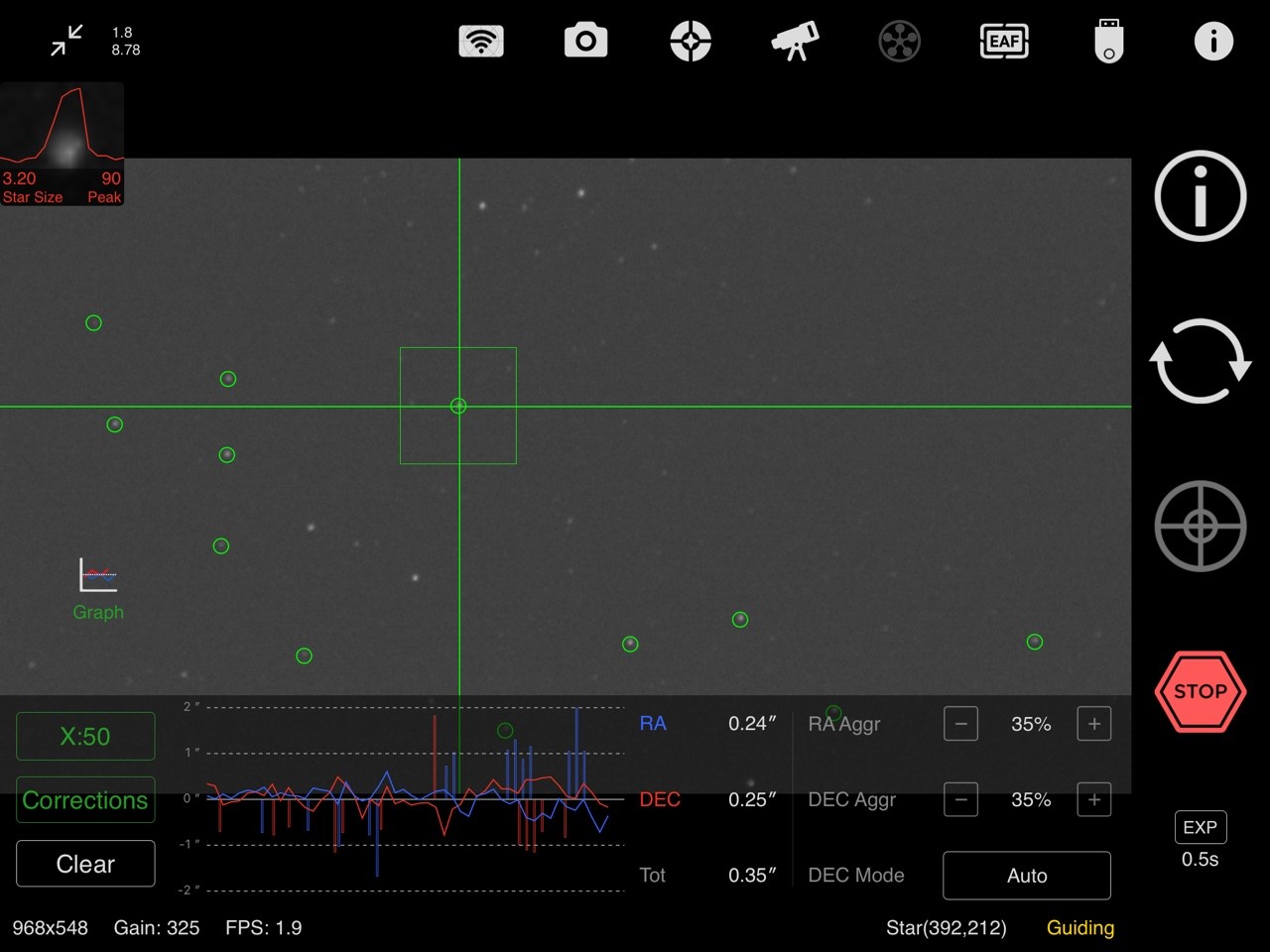Just a quick check since it was clear outside. This is with a 7 kg or so payload (OTA + dual saddle plate + Borg 55FL as guide scope) on a RainbowAstro RST135 mount. Guide scope focal length is 251 mm with 685nm IR cut filter and ASI290MM (USB 3 version) at bin2. Mount and a William Optics Mortar tri-pier has been left outdoors for 24/7 for a over a year now (two summers and one winter) under dry bags. The electronics (ASIAIR/eero router/USB hub) are left outdoors too inside a waterproof enclosure at the base of the tri-pier.
The last time polar alignment was performed was in early September (so it is probably off by a couple of dozen arc seconds).
When calibrating at 0.5 second exposure, ASIAIR never went above 1 FPS. However once it started guiding, I got 2 FPS with 12 guide stars (a couple of guide stars are just visible behind the guide graph)

Gusty outside to around 15mph, so I backed off the feedback gain (aggressiveness) to 35%. It might guide better if not for this.
Guiding around the region of NGC7000 (my latitude is +45.45º, so NGC7000 transits close to Zenith), with North America about 2 hours west of the Meridian. I had earlier calibrated near 0º declination with pier west, and did not recalibrate, and simply asked ASIAIR to flip the guide pulses.
This (0.5 sec exposure, 2 FPS) seems better than my average before v1.8 (exposure 0.5 sec, 1 FPS); but this is just one night, so take it with a grain of salt.
BTW, the Guide Graph won't update faster than 1 FPS either. So, you more often than not, see multiple guide pulses for each guide graph refresh. Notice lots of guide corrections, but the RMS is satisfactorily low.
So, no problem with guide resolution in my case even with 2x2 binning with a 2.9µm sensor.
Next possible improvement is for guiding in ASIAIR to support dark frame subtraction.
Chen